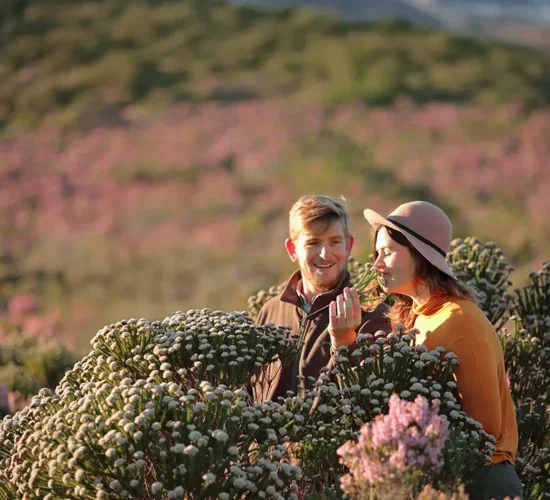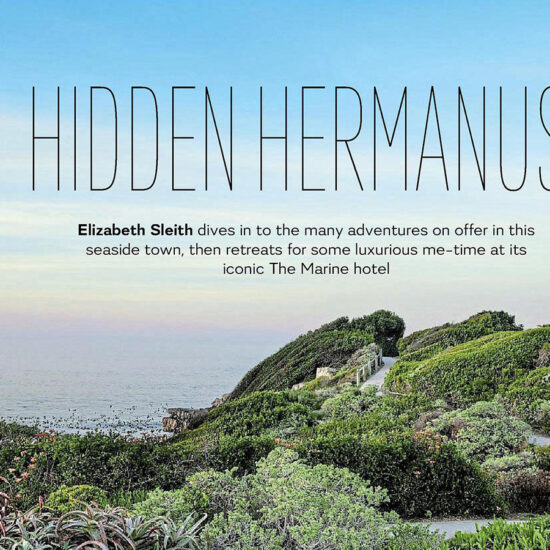Historical Architecture, Cape Whale Coast
The towns of the Overstrand have a rich historical background. This is reflected in the churches and buildings and much is done to maintain their appeal while still encouraging development and growth.
Many of the buildings date back to the 18th and 19th century and have been declared national monuments. There are fine examples of Victorian and Gothic architecture in most towns. Locals have put an enormous amount of energy into restoring and preserving buildings to their former glory.
HISTORICAL BUILDING IN STANFORD
Anglican Church(cnr Longmarket/Morton Sts)
These buildings reverted from a mission school to an Anglican Church in 1872 and was granted permission to perform weddings from 1892. The hall beside the church was meant to be the minister’s residence, but was used for Sunday School and for very strict education classes for Anglican children.
Bachelor’s Hope
(19 Morton St) The house was first built as a town house (“tuishuis”) by Pieter Erwee around 1902. In the 1930’s it was known as Bachelor’s Hope because the lady teachers lived there and many a local bachelor found his wife there.
Duminy’s Shop & Home
(23 Church St) The building was built by Jaap Swaney and changed hands many times. The last shop owner was Hendrik Duminy who owned it through the last World War and until the 1960’s. It became a well known landmark.
Dutch Reformed Church
(cnr Queen Victoria/Church Sts) The church building was completed in 1926 at a cost of £12 000, which included the building, organ, clock and pews. The old church building became the church hall and was later demolished and replaced in the 1960’s by the present hall. The church, tower, clock and organ were recently restored at a cost of over R200 000.
Dutch Reformed Mission Church
(cnr School/Kiewietz Sts) The first mission church hall was built in 1930 on the farm Doornkraal and later, in 1936, another one on Bruinklip. The latter began to look dilapidated, was demolished and the building materials used to build this church in 1952.
First Farm House at Klein River Valley
(12 Church St) It was built by Christoffel Brandt circa 1785. The Parbly’s, Stanford’s and the Moore’s also lived there while each owned the farm. After going through many owners it was converted into a shop and was named Ons Winkel, during that time the valuable timber from the ceilings were removed.
TEL: +27 (0)28 341 0048
First Police Station
(20 Church St) This was the original police station, courtroom and home of the police chief. The prison cells are still at the back of the building. It is now a private home.
First Post Office
(13 Morton St) The same Mr Goetz was the post master and the post office was housed in a building behind his home and school.
Full Gospel Church
(cnr Queen Victoria/Bezuidenhout Sts) This church building was erected in 1940 by the brothers Philip and Daan du Toit. It has always served more than one church denomination.
Market Square
(between Short-/Longmarket Sts) Ox-wagons were outspanned here during Communion Services (Nagmaal) in the early days. It is one of the few remaining market squares left undeveloped in South Africa. It is still used as a common for community and sports events. The Stanford Heritage Festival is held here on the last Saturday in October annually.
Okkie Smuts School
(17 Church St) The three front rooms were built in 1910 The headmaster, Mr Hofstede, lived in one of the rooms. The wings were built in the 1920’s and the other buildings added at a later stage.
Old Graveyard
(Cnr Queen Victoria/Moore Sts.) The site for this graveyard was chosen by the earliest owners of the Klein River Valley farm. Legend has it that one of the owners, probably Parlby, wanted to see his beloved’s grave from the farm house’s balcony. Hester Parlby’s was one of the earliest graves and Phillipus De Bruyn, the village of Stanford’s founder, was also laid to rest here.
Oulap School
First School (13 Morton St) Circa 1870. Mr James Goetz was the first teacher and he ran a school at his home. The children had to pay one penny (an “oulap”) a day to attend. The school became known as the “Oulap School”.
Stanford House
(20 Queen Victoria St) Formerly known as “Die Langhuis”. It is thought that originally it was one of the farm sheds on the original farm, but was converted into a house around 1903. Today it is a prestigious hotel with a beautifully equipped conference centre.
Historical Tours
Stanford Historical Tours incorporates a tour of the historical core of village – call the Tourism Bureau for more information: +27 (0)28 341 0340
- IncludedHistorical Architecture, Cape Whale Coast
- Not IncludedNatureRelaxationHobbyEnthusiastsFamily-fun




